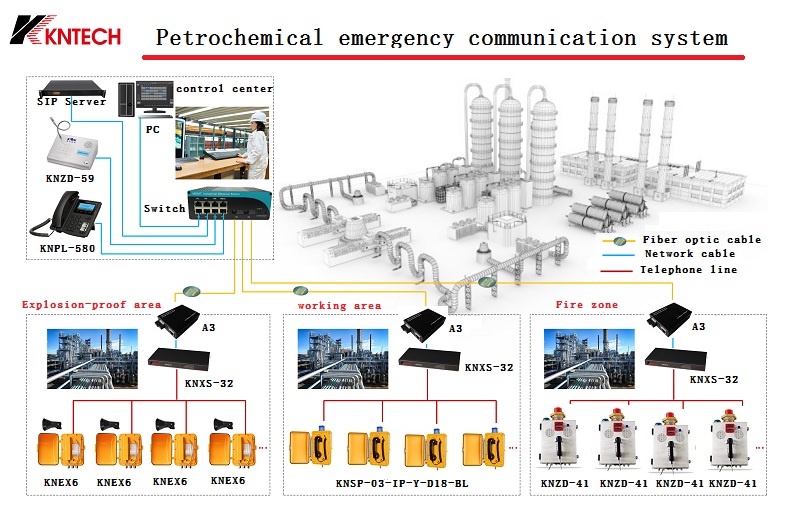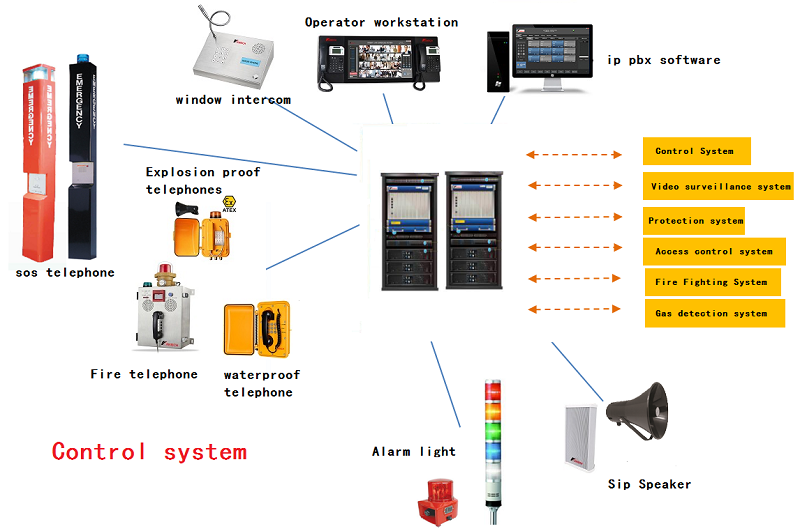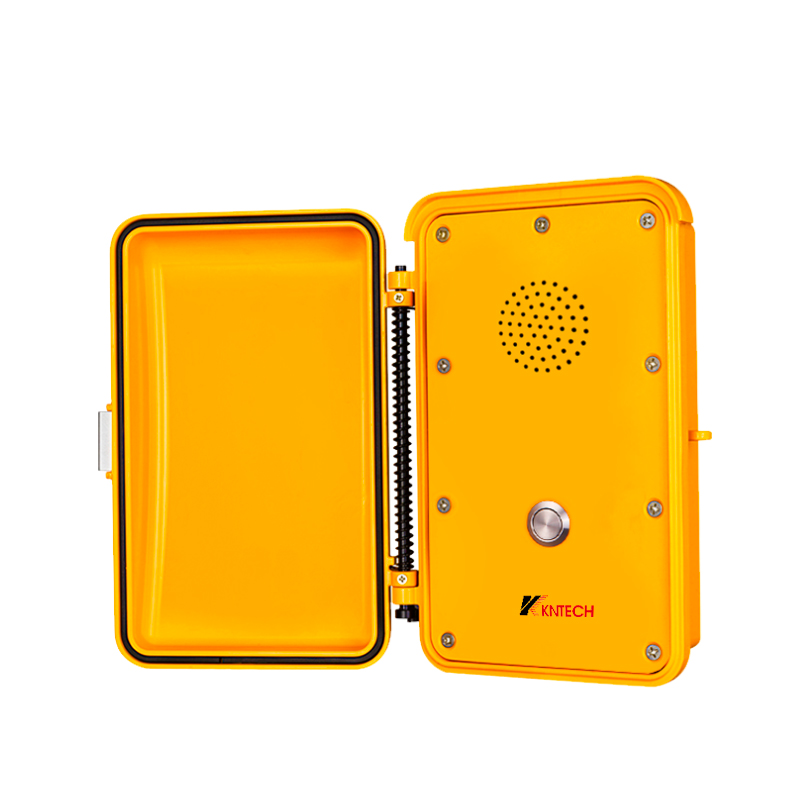Main functions of the industrial intercom system:
一Communication and security system one-stop integrated management platform, providing comprehensive management of data reading, status monitoring, control output and operation record for system internal equipment and networked systems
* On-site staff positioning, whereabouts
* On-site personnel safety status monitoring: fall alarm, long-term static abnormal alarm, cross-country alarm
* Wireless intercom: point-to-point communication, group call, centralized call, emergency call
* Telephone communication and emergency calls: point-to-point communication, group call, centralized call, emergency call
* Division broadcast and centralized broadcast
Loud sound alarm: manual alarm, interface automatic alarm
* System self-test and self-diagnosis function
* Provide digital or analog input and output interface
Main features of the system:
* Using the most advanced PC management technology
* Provide comprehensive management platform for data reading, status monitoring, control output and operation record of all communication and security systems
* Support multi-system networking, cross-regional networking
* Field equipment meets the requirements of explosion-proof, waterproof, dustproof, moisture-proof, anti-vibration and anti-strong electromagnetic interference
* Industrial maintenance-free system
* System self-diagnosis and automatic detection of terminal equipment timing
* System equipment obtained international and domestic certifications such as IECEx, TUV, CCC, CE, CNAS, FCC, etc.
The main components of the system:
* Center control equipment: server and control cabinet
* System management equipment: PC and management software
* dispatching command equipment: dispatching station, desktop station
* Field equipment: amplified telephone, speaker, alarm status light, passive beacon
* Mobile devices: explosion-proof telephone and patrol shoulder microphone
* Other: Emergency rendezvous operation column
Industrial intercom system basic functions

Basic voice functions include single call, group call, dispatcher interconnection call, telephone interconnection call, system full call, broadcast call, and so on.
+ Emergency call
An emergency call is a call initiated by a user in an emergency.
Emergency calls initiated by emergency call buttons are often used when the user handles various emergency transactions.
+ Priority access
The air interface resources of the base station are limited. In order to more effectively handle the service requirements of users, the system implements a batch access policy for users according to user levels and user types. At a certain time, the system may only allow a certain level or a certain type of users to access the system. For such users, they have the right to preferential access to the system at this time.
+ Call Priority
The system will process the priority of these calls according to the different call originating users, the type of the call, and the structure of the people participating in the call. The call with the highest priority is processed first, and then the call with the lower priority is processed. When the system is busy, you can proactively end low-level, unimportant calls and allocate resources to high-level, high-urgency calls.
+ User Level
The system divides users into different levels based on their importance.
+ Dynamic Reorganization
Dynamic reorganization allows an authorized dispatcher to dynamically add a temporary talk group to a mobile terminal through an air interface without reprogramming the mobile terminal. . The dynamic reorganization feature allows for the establishment and dissolution of temporary groups.
+ Enter later
The late entry function ensures that members who have not joined the group call can join the group call after having the condition (end of call or power on registration). The late entry is valid after the group call has been established and the traffic channel has been assigned to the group of calls, and the call ends and the traffic channel is released.
+ demolitions / forced insertion
Strong insertion: In the call with the dispatching station, when there is a mobile terminal talking, the dispatching station can forcibly terminate the current speech at any time, obtain the right to speak and start speaking.
Strong demolition: The authorized dispatcher can force the end of the ongoing call regardless of whether the mobile terminal is transmitting.
+ Busy queue and automatic callback
Busy queue: When the system channel is occupied, the user initiates a call through the PTT button, and the system prompts the user through the mobile terminal: “The system is busy, the call is queued”. At this time, the call initiated by the user will be in a waiting state during the queue validity period and will not end.
Automatic callback: The user initiates a call because the called party is busy (or for other reasons), the system rejects the call and starts monitoring the called party. After the called mobile terminal receives the system reject signaling, it terminates the call. When the system monitors that the called party is idle, it will automatically establish a call and notify the calling and called parties. After receiving the callback prompt from the system, the calling user can choose to connect or reject.
+ Call display
The user initiates a call through the PTT button. After the call is connected, all the mobile terminal interfaces participating in the call will display the relevant status information of the call until the call ends, which is convenient for the user to know the current mobile terminal call status.
+ Speaker identification
During the group call process, when a mobile terminal obtains the right to speak (acquired after pressing the PTT button successfully), the mobile terminal number of the speaker is displayed in real time on all mobile terminals that are answering the speech, so that the user who answers the speech can know Who is the current speaker?
Industrial intercom system Scheduling function
The basic voice call function can be implemented through the dispatching station, and the scheduling center can manage the daily and emergency services of the system terminal, such as a call, a group call, a full call, an emergency call, a personnel location, and a short message service.
Industrial intercom system Alarm function
automatic alarm
The industrial intercom system provides an alarm input interface to the control system and the fire and gas system. After receiving the interface signal, the relevant alarm sound source stored in the system is automatically sent to the corresponding alarm area and the sound and light alarm is activated.
Manual alarm
The industrial intercom system's telephone station (operator workstation, indoor telephone station, outdoor telephone, intercom, etc.) can manually activate the relevant alarm sound source stored in the system to send to the corresponding alarm area and activate the sound and light alarm.
Industrial intercom system Basic data services
Basic data services: basic data services such as short data transmission, short data pull-up, status messages and emergency alarms.
Industrial intercom system emergency meeting point
The emergency rendezvous point of the industrial intercom system provides an audible and visual alert in the event of an emergency and enables telephone calls, calls and alarms.
Industrial intercom system network management function
The system has an independent network management system, which can be connected to the base station through the local area network, and the network management terminal can realize the control and management functions through the local area network.
一 Provide one-stop integrated management platform for communication and security systems
Management and query permission settings
Provide comprehensive management platform for data reading, status monitoring, control output and operation record of all communication and security systems
Support multi-system networking, cross-regional networking




.jpg)


.jpg)